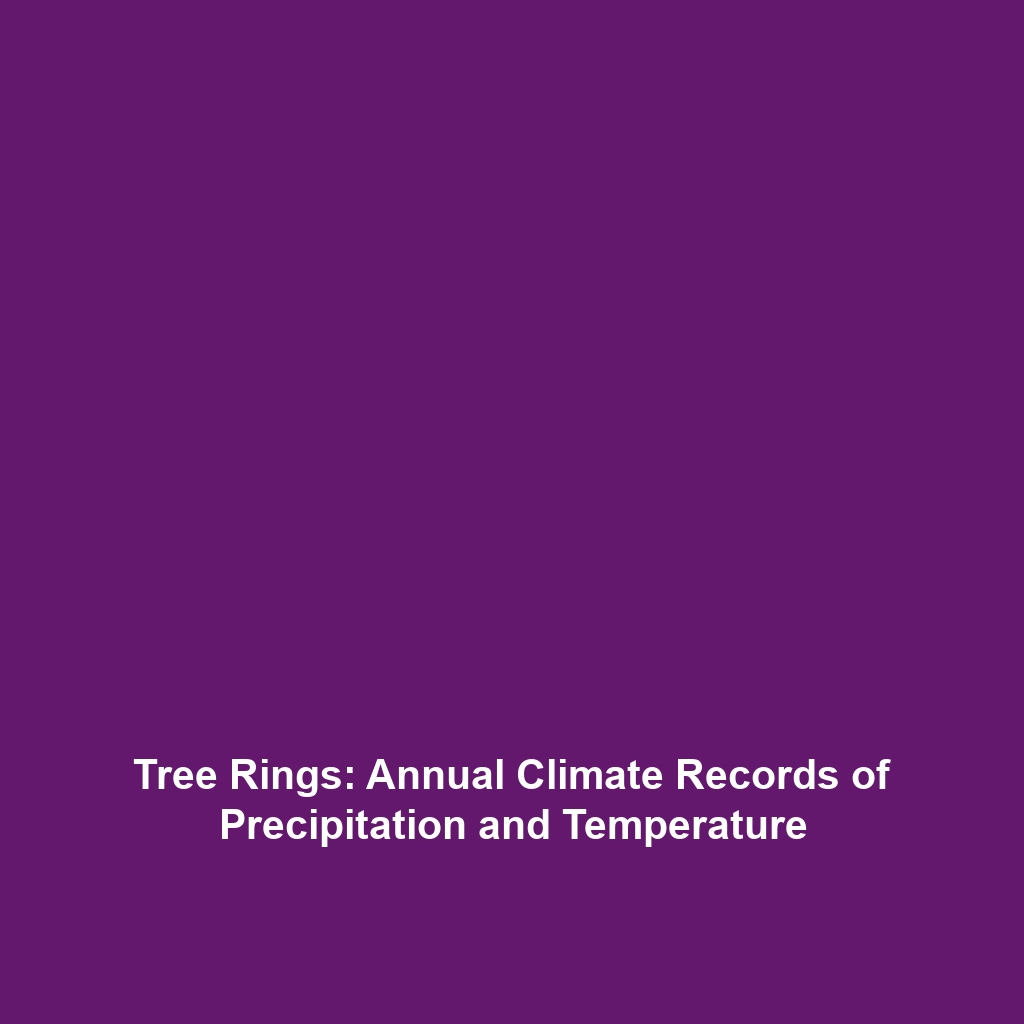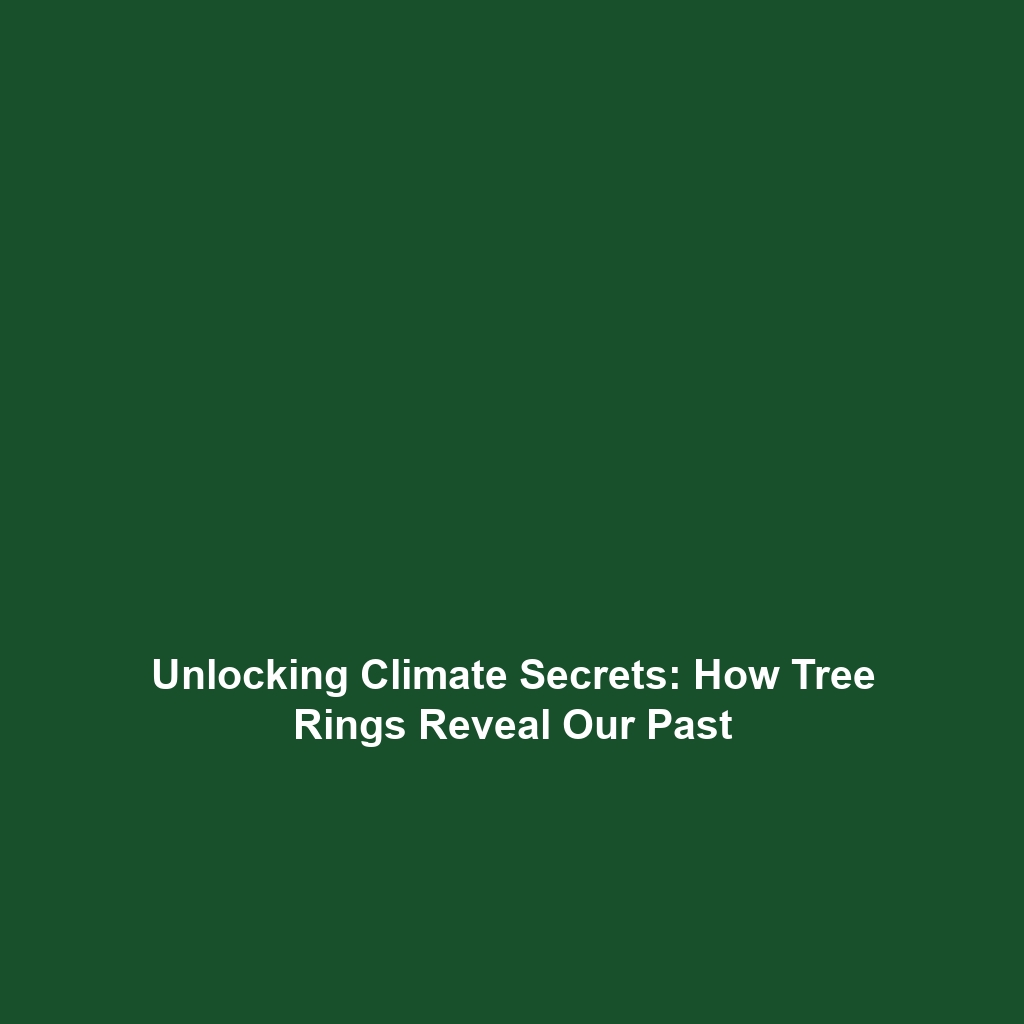Tree Rings: Annual Records of Climate Conditions
Tree rings serve as a natural archive of climatic conditions, enabling researchers to investigate historical patterns of precipitation and temperature. This information is crucial for understanding Climate History, as it allows scientists to piece together the climatic conditions that have influenced ecosystems and civilizations over centuries. By examining the width and composition of these rings, we gain insights into past environmental changes, making tree-ring analysis a vital tool in the realm of climate science.
Key Concepts of Tree Rings in Climate History
Tree rings, also known as dendrochronology, provide several key insights into climate conditions. The primary concepts include:
- Growth Rings: Trees typically produce one growth ring per year, which can be used to estimate annual growth conditions.
- Width Variation: The width of a ring can indicate the amount of precipitation received during that growing season; wider rings generally signify more rainfall.
- Density and Composition: The density of wood produced in different years can reflect temperature variations, with denser wood typically indicating cooler conditions.
These concepts highlight how tree rings contextualize climate data within a historical framework, contributing significantly to our understanding of Climate History.
Applications and Real-World Uses
Tree rings offer numerous practical applications in Climate History, facilitating research and policymaking. Some key uses include:
- Historical Climate Reconstruction: Researchers utilize tree rings to reconstruct past climatic conditions, helping to model future climate scenarios.
- Archaeological Insights: Dendrochronology assists in dating wooden artifacts and structures, providing insight into human-environment interactions throughout history.
- Forest Management: Understanding past climate conditions can inform strategies for sustainable forest management and conservation efforts.
These applications illustrate how tree rings are instrumental as a historical record of climate conditions.
Current Challenges in Tree Rings Research
Despite their utility, there are challenges in studying tree rings and their applications within Climate History:
- Geographical Limitations: Trees must be present in a region to analyze historical climate data; thus, areas lacking trees are underrepresented.
- Data Interpretation: Variability in tree response to climatic conditions can complicate the interpretation of ring data.
- Research Funding: Comprehensive studies require significant resources, often limiting the scope of research.
These issues in tree-ring analysis underscore the need for continued research and investment in this field.
Future Research and Innovations
The future of research surrounding tree rings holds great promise. Emerging innovations include:
- Advanced Imaging Techniques: New imaging technologies allow for more precise measurements of ring characteristics, enhancing data accuracy.
- Integrative Modeling: Combining dendrochronology with climate models can refine predictions about climate impacts on ecosystems.
- Climate Attribution Studies: Ongoing research aims to establish links between tree-ring records and specific climate events, improving our understanding of historical climate dynamics.
These advancements will not only enhance our understanding of past climate conditions but also improve forecasting for the future.
Conclusion
Tree rings are invaluable for providing annual records of climate conditions, particularly precipitation and temperature, within the context of Climate History. Their analysis contributes significantly to our understanding of past environmental changes and their implications for future climate trends. As research progresses, it is essential to support studies in this area to unravel further complexities of our planet’s climatic history. For more information on related topics, visit our sections on Climate Change and Dendrochronology Fundamentals.

